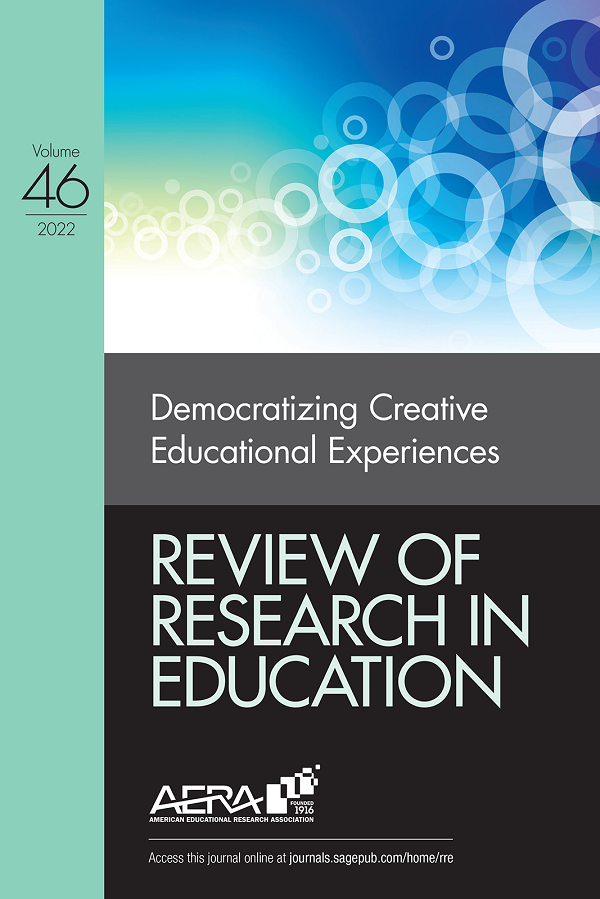教育创造力评价述评
IF 2.4
1区 教育学
Q1 EDUCATION & EDUCATIONAL RESEARCH
引用次数: 8
摘要
本章从历史、理论、实证和实践的角度对与教育创造力评估相关的文献进行了系统、综合和批判性的回顾。我们研究了2010年1月至2021年5月在八本创造力、心理学和教育期刊上发表的关于教育的文章中使用的评估。我们发现,对教育创造力的评估分为心理研究和教育研究,并增加了国际参与。此外,这些评估更一般而非具体,更侧重于认知方面而非非非认知方面。与以往对创造力评估的综述一样,这篇综述表明,教育中的创造力仍然主要通过发散思维或创造力测试、自我报告问卷和基于产品的主观技术来评估。我们分析了每种方法的优点和缺点,并强调了评估中的许多创新。我们进一步讨论了主要的评估方法如何解决教育中的种族、族裔、阶级和性别问题。我们在结束审查时就如何更好地评估教育中的创造力以及对教育中创造力的评估如何有助于我们理解创造性教育体验和实现教育民主化提出了建议。本文章由计算机程序翻译,如有差异,请以英文原文为准。
A Critical Review of Assessments of Creativity in Education
This chapter provides a systematic, synthesizing, and critical review of the literature related to assessments of creativity in education from historical, theoretical, empirical, and practical standpoints. We examined the assessments used in the articles focusing on education that are published from January 2010 to May 2021 in eight creativity, psychological, and educational journals. We found that the assessments of creativity in education are split between psychological and education research and have increased international participation. Additionally, these assessments are more general than specific and focus more on cognitive than noncognitive aspects. Like previous reviews of assessments of creativity in general, this review showed that creativity in education is still mainly assessed by divergent thinking or creativity tests, self-report questionnaires, and product-based subjective techniques. We analyzed the benefits and drawbacks of each approach and highlighted many innovations in the assessment. We further discussed how the major assessment approaches address race, ethnicity, class, and gender issues in education. We concluded the review with recommendations for how to better assess creativity in education and how assessments of creativity in education contribute to our understanding of the creative educational experience and democratizing education.
求助全文
通过发布文献求助,成功后即可免费获取论文全文。
去求助
来源期刊

Review of Research in Education
EDUCATION & EDUCATIONAL RESEARCH-
CiteScore
15.70
自引率
0.00%
发文量
14
期刊介绍:
Review of Research in Education (RRE), published annually since 1973 (approximately 416 pp./volume year), provides an overview and descriptive analysis of selected topics of relevant research literature through critical and synthesizing essays. Articles are usually solicited for specific RRE issues. There may also be calls for papers. RRE promotes discussion and controversy about research problems in addition to pulling together and summarizing the work in a field.
 求助内容:
求助内容: 应助结果提醒方式:
应助结果提醒方式:


